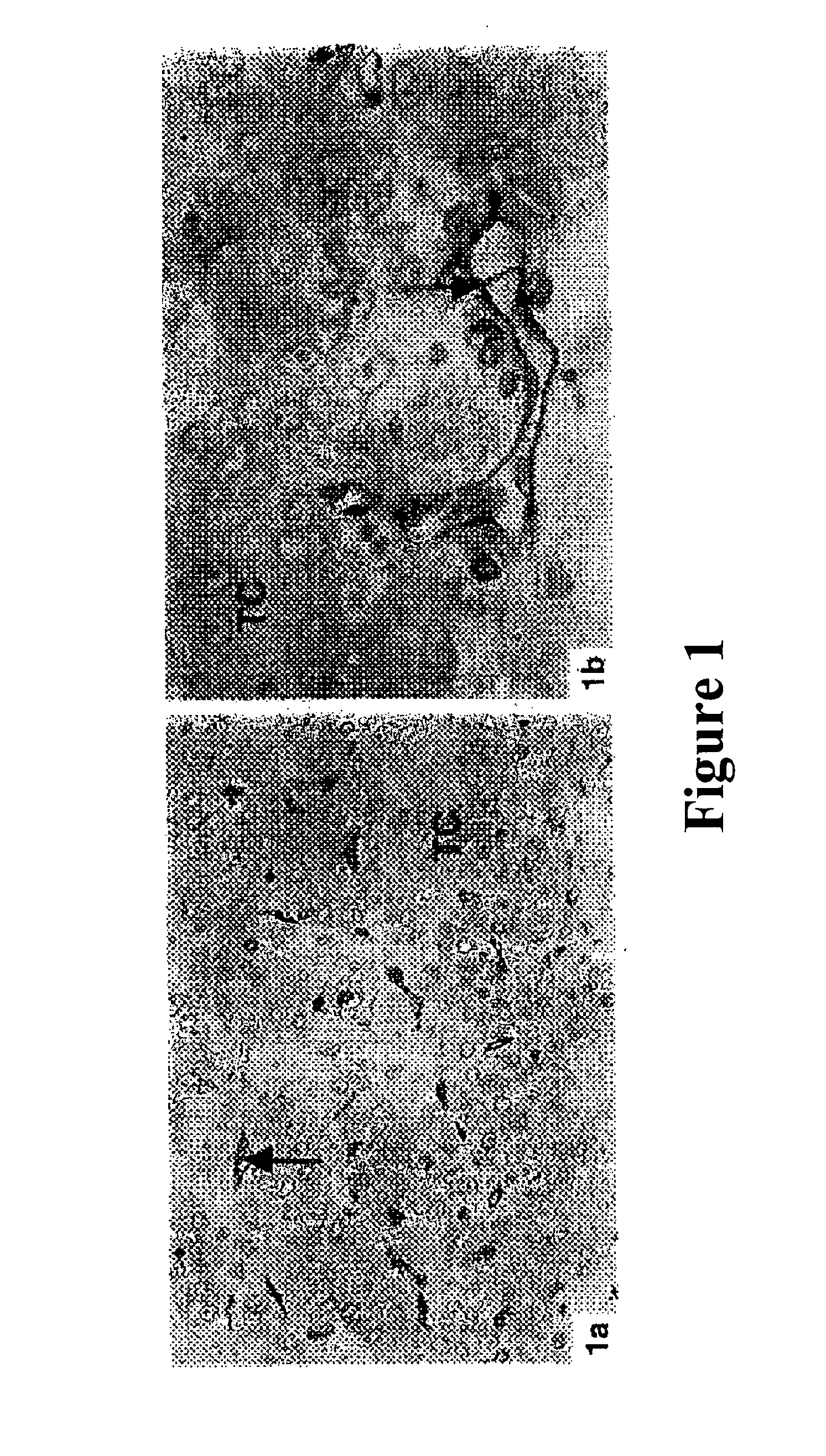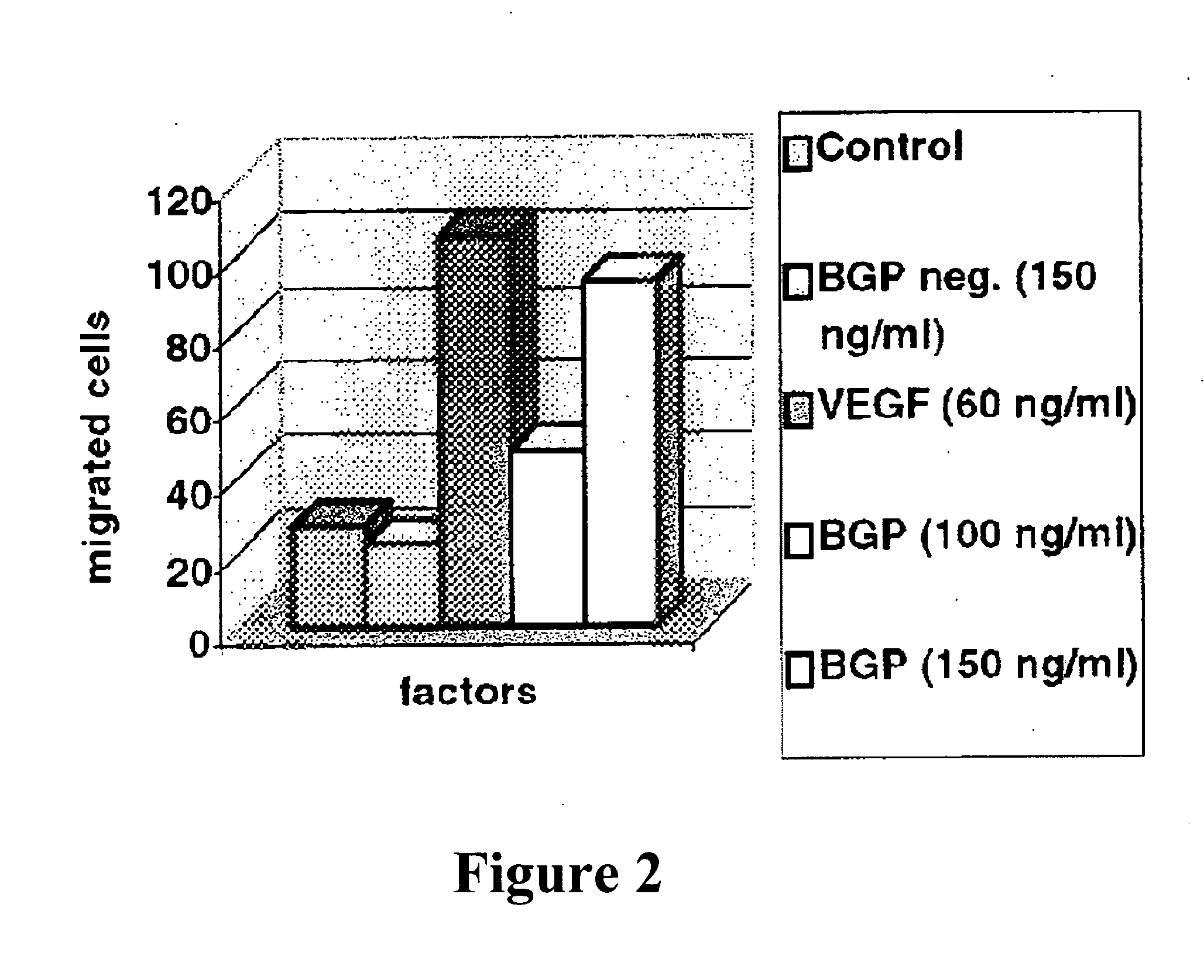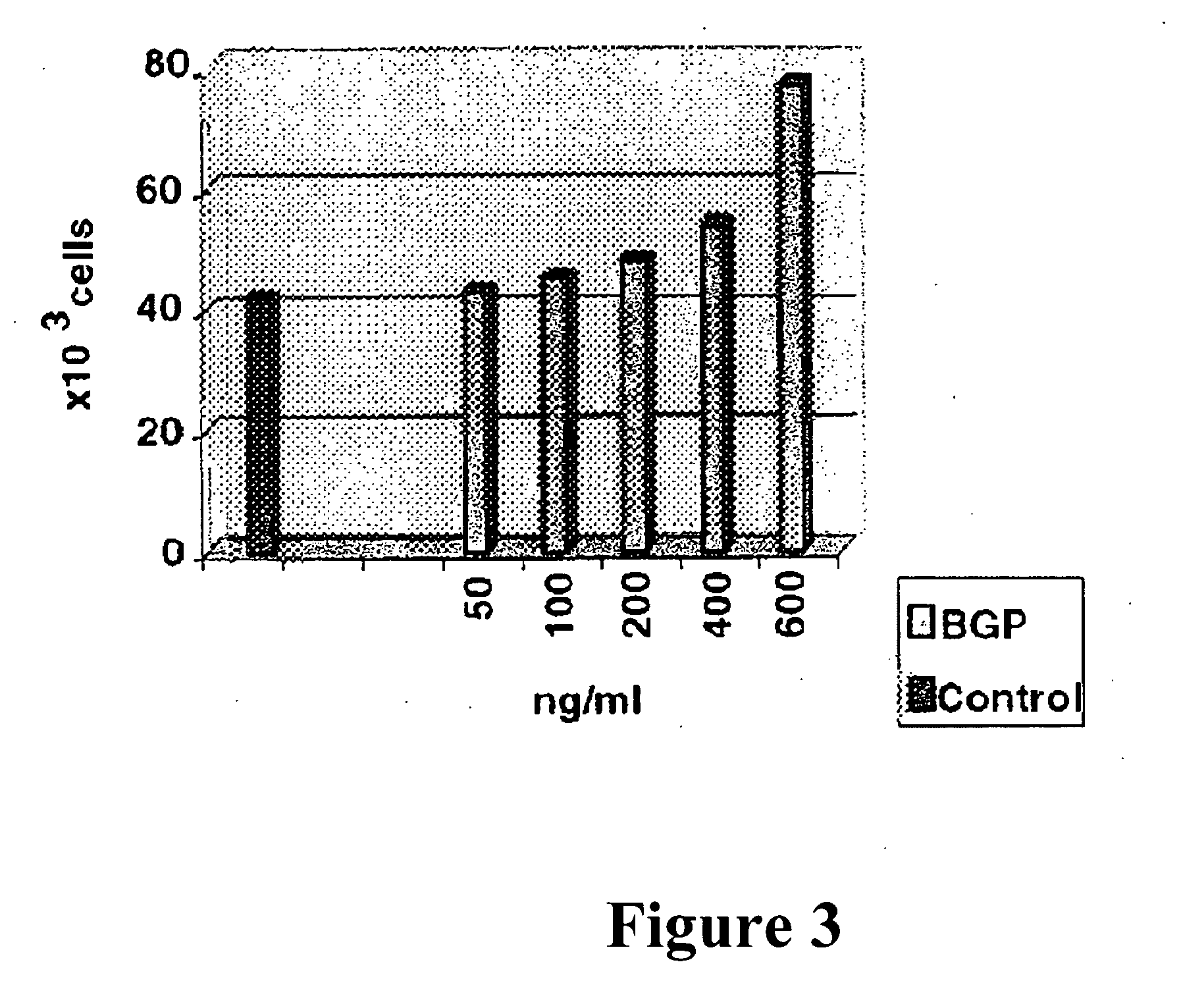Influencing angiogenesis using CD66a
a technology of angiogenesis and cd66a, applied in the direction of antibody ingredients, biochemistry apparatus and processes, applications, etc., can solve the problems of blood vessel regress and tumor mass
- Summary
- Abstract
- Description
- Claims
- Application Information
AI Technical Summary
Benefits of technology
Problems solved by technology
Method used
Image
Examples
example 1
Localization of CD66a in Tumor Capillaries
[0063] Tumors were stained immunohistochemically using the monoclonal anti-CD66a antibody 4D1 / C2 and investigated by means of an optical microscope. For this purpose, an intensifying method using nickel and glucose oxidase was used in addition to the previously employed immunohistochemical methods (Prall et al. (1996), J. Histochem. Cytochem. 44, 35-41). Furthermore, electron-microscopic analyses were carried out following immunohistochemical staining using the monoclonal 4D1 / C2 antibody (see FIG. 1).
[0064] Human testicular tumors, brain tumors as well as prostate, bladder and kidney carcinomas were examined immunohistochemically. CD66a was localized in endothelial cells and in the basal membrane of the tumor capillaries. Mature, non-proliferating resting vessels of the examined organs were negative. In case the tumor is divided into different zones in accordance with functional aspects, namely tumor cells, tumor margin and tumor environme...
example 2
Effect of CD66a on the Proliferation and Chemotaxis of Cultured Endothelial Cells
[0065] In order to test the effect of CD66a on the proliferation and chemotaxis of cultured endothelial cells, the glycoprotein was purified from membrane fractions of human granulocytes. The membrane fraction was isolated in accordance with established methods (Drzeniek et al. (1991), Cancer Letters 56, 173-179; Stoffel et al. (1993), J. Immunol. 150, 4978-4984). After extracting the membrane glycoproteins with a non-ionic detergent, they were bound to an immobilized monoclonal CD66 antibody and eluted using glycin-HCl at pH 2.2. Following neutralization the eluate was further separated by means of gel chromatography on Superdex 200 (Pharmacia). The CD66a-positive fractions were pooled. Contaminations in the low-molecular region were separated by means of ultrafiltration using a filter having an exclusion of 100 kD. In combination with a Western blot it was shown by means of SDS-PAGE in silver gel tha...
example 3
Effect of CD66a on the Formation of Capillary-Like Vascular Tubes in Cell Culture
[0072] The test results described in Example 2 suggest that CD66a is causally involved in the formation of new vessels (neoangiogenesis). In order to check this hypothesis, animal experiments would be most suitable. However, since CD66a is a human glycoprotein, it has to be expected that due to the differences in the species the effect in the experimental animal shows no or only slight expression. The finding that the monoclonal anti-CD66a 4D1 / C2 antibody shows good reaction in human tissues supports this assumption. The reaction is weak in the corresponding tissues of rats and mice and can be distinguished only with difficulty from a non-specific background reaction. The 4D1 / C2 antibody obviously binds to an antigenic structure, which does not occur in rodents in this form.
[0073] In order to circumvent the problems caused by the differences regarding the species, cell culture models are used in which...
PUM
| Property | Measurement | Unit |
|---|---|---|
| concentration | aaaaa | aaaaa |
| concentration | aaaaa | aaaaa |
| concentrations | aaaaa | aaaaa |
Abstract
Description
Claims
Application Information
 Login to View More
Login to View More - R&D
- Intellectual Property
- Life Sciences
- Materials
- Tech Scout
- Unparalleled Data Quality
- Higher Quality Content
- 60% Fewer Hallucinations
Browse by: Latest US Patents, China's latest patents, Technical Efficacy Thesaurus, Application Domain, Technology Topic, Popular Technical Reports.
© 2025 PatSnap. All rights reserved.Legal|Privacy policy|Modern Slavery Act Transparency Statement|Sitemap|About US| Contact US: help@patsnap.com



